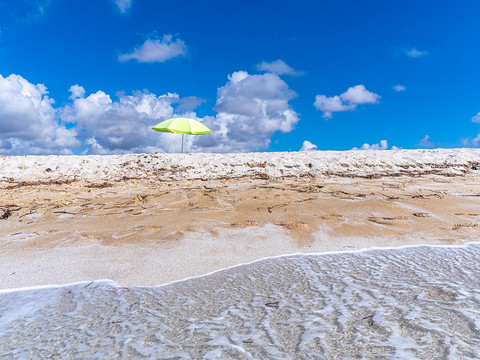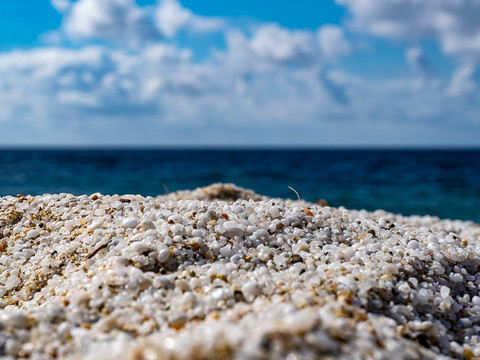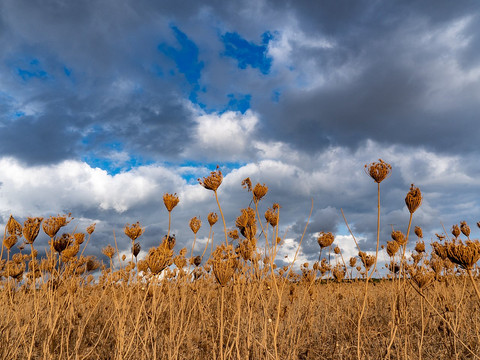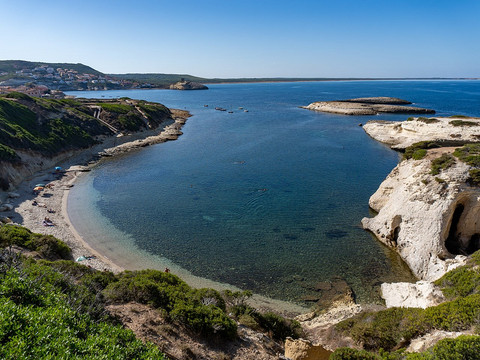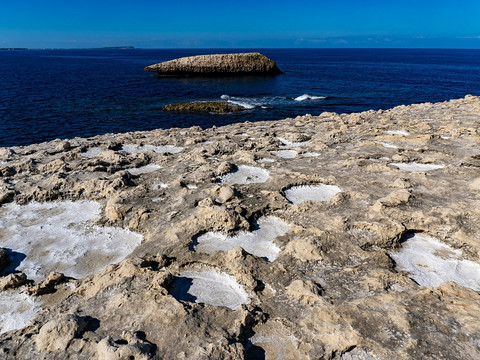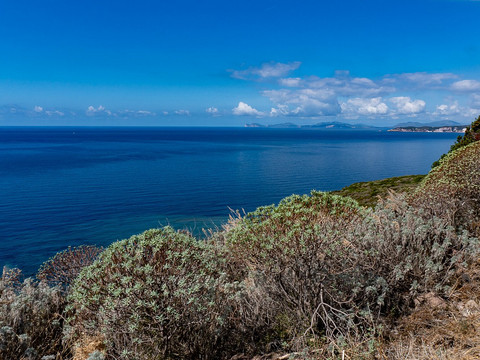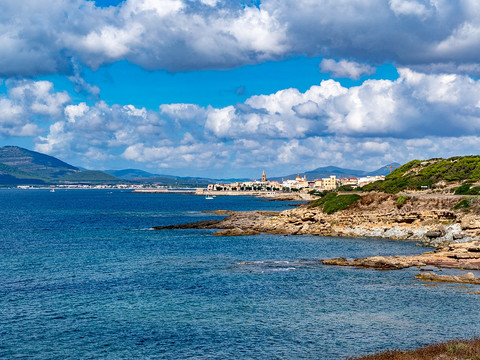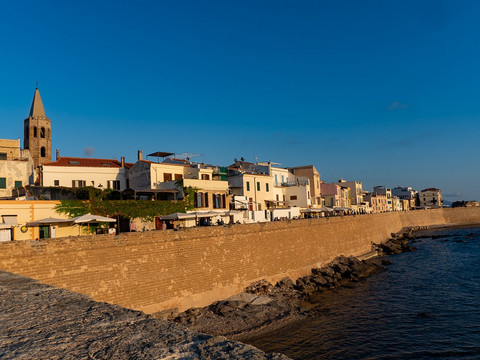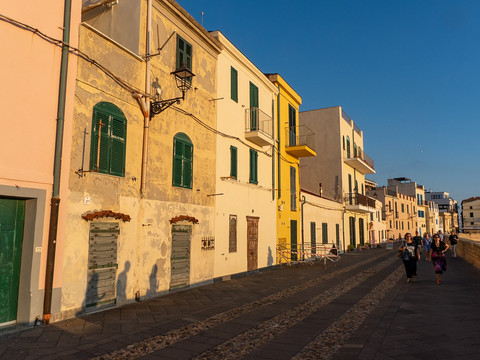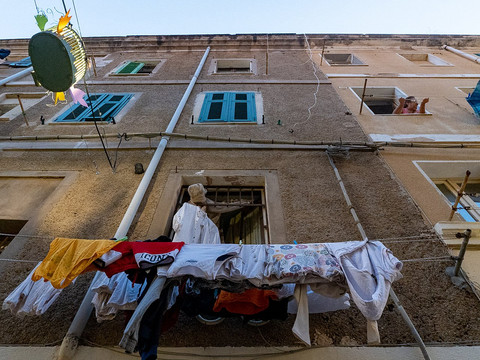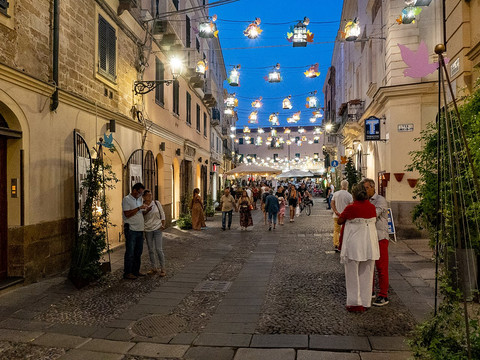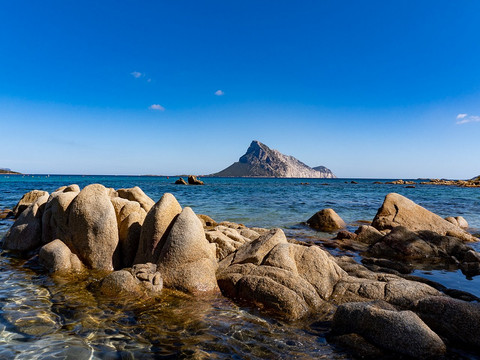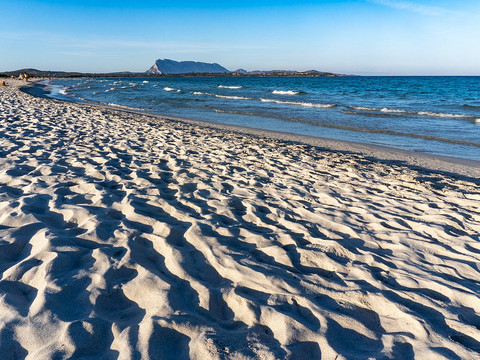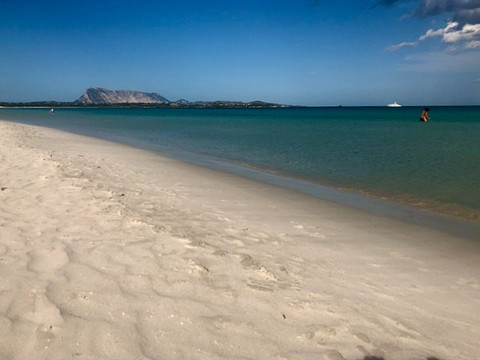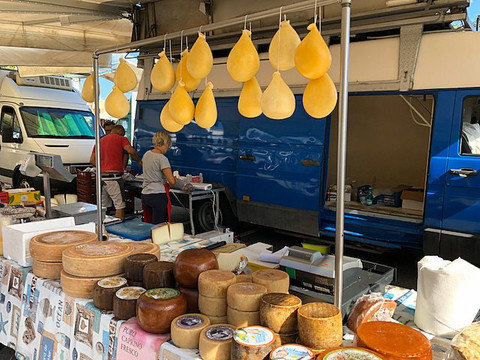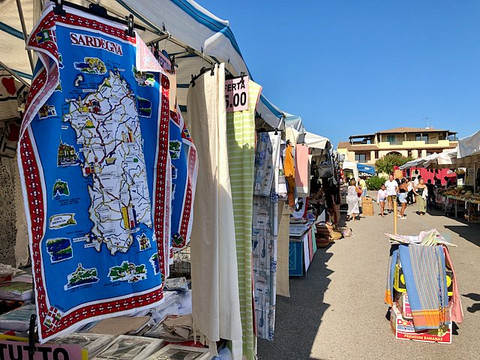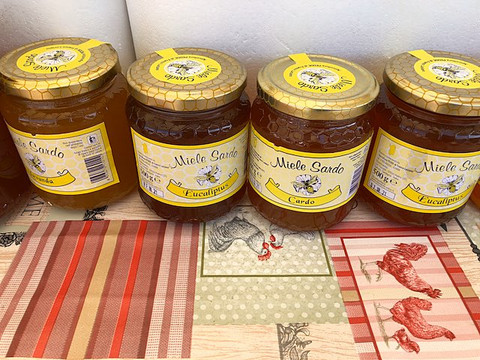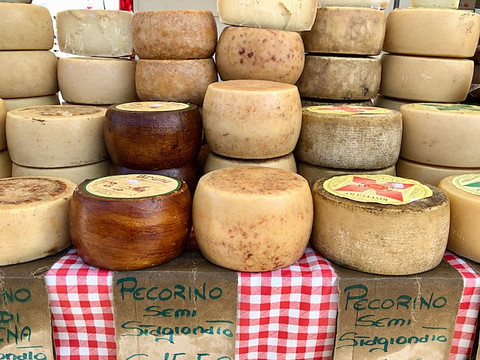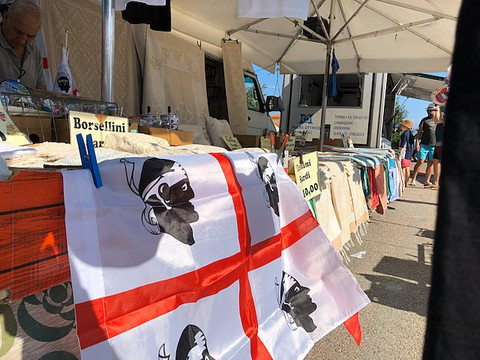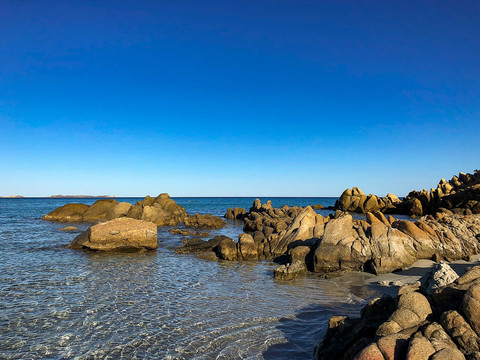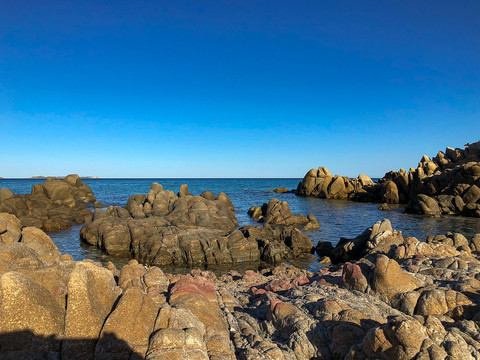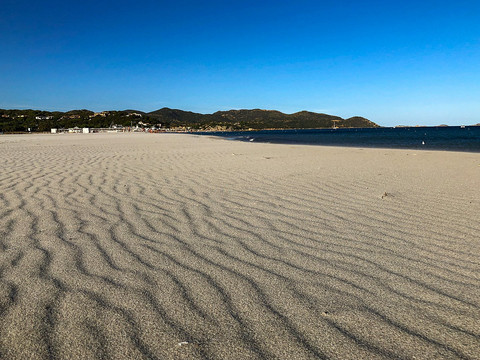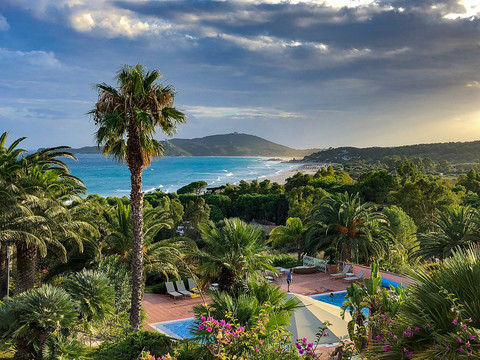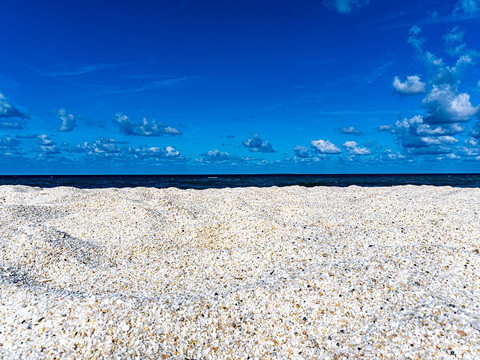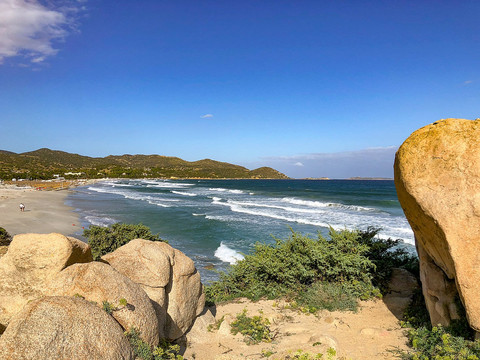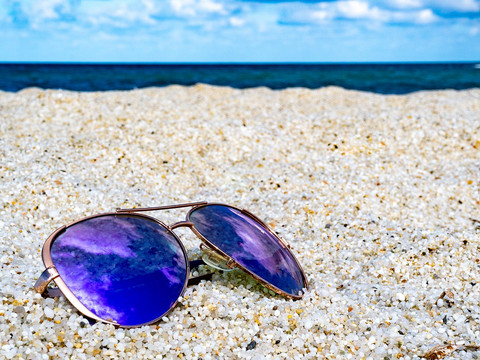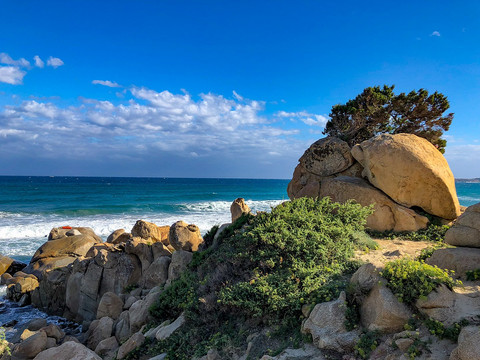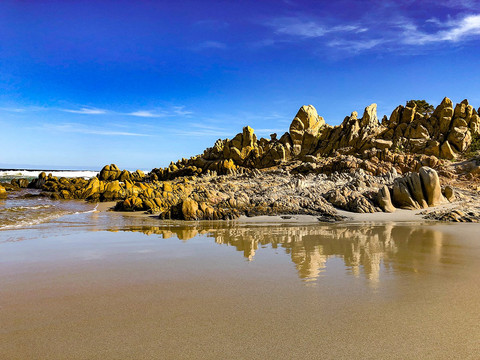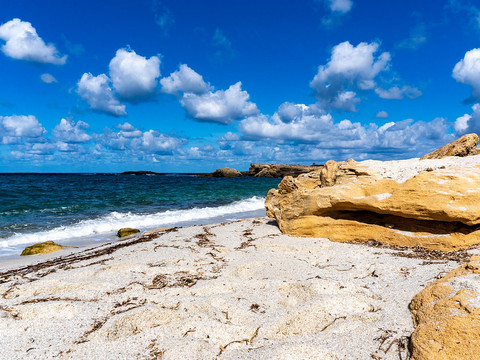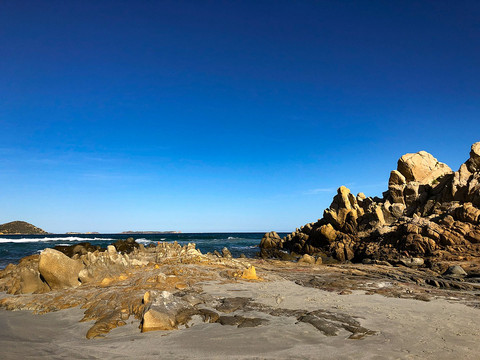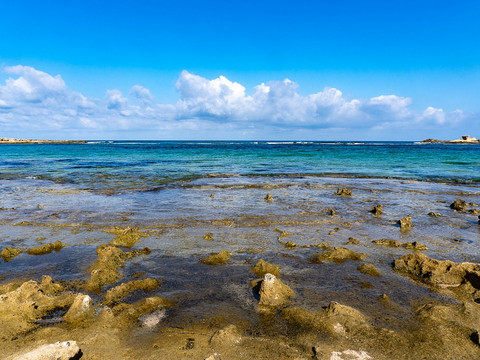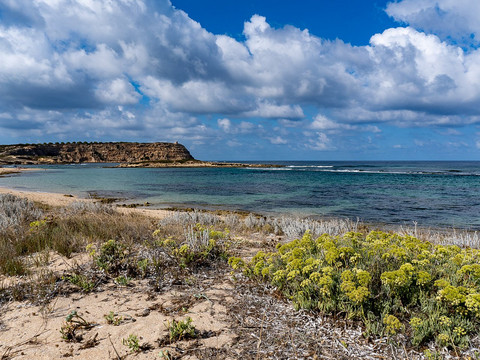If you choose Sardinia, you will get to know the Mediterranean from its most beautiful side. With countless sandy beaches and bays dotted with bizarre granite rocks, the Mediterranean island is a dream come true for swimmers, windsurfers, sailors and recreational divers. And the hinterland's lonely mountain villages with there special wine tradition as well as the mysterious Nuraghic culture offer great opportunities for excursions.
Why do more and more Swiss people come to Sardinia every year? The answer is simple. From April to October, the second-largest Italian island attracts visitors with a pleasant climate, paradisiacal beaches and delicious food. The journey is surprisingly easy. After a one-hour flight, you'll find yourself in another world and quickly forget the daily grind of life at home. Also by car and ferry, one reaches the island in no time and after a short time one finds oneself at the first beach.
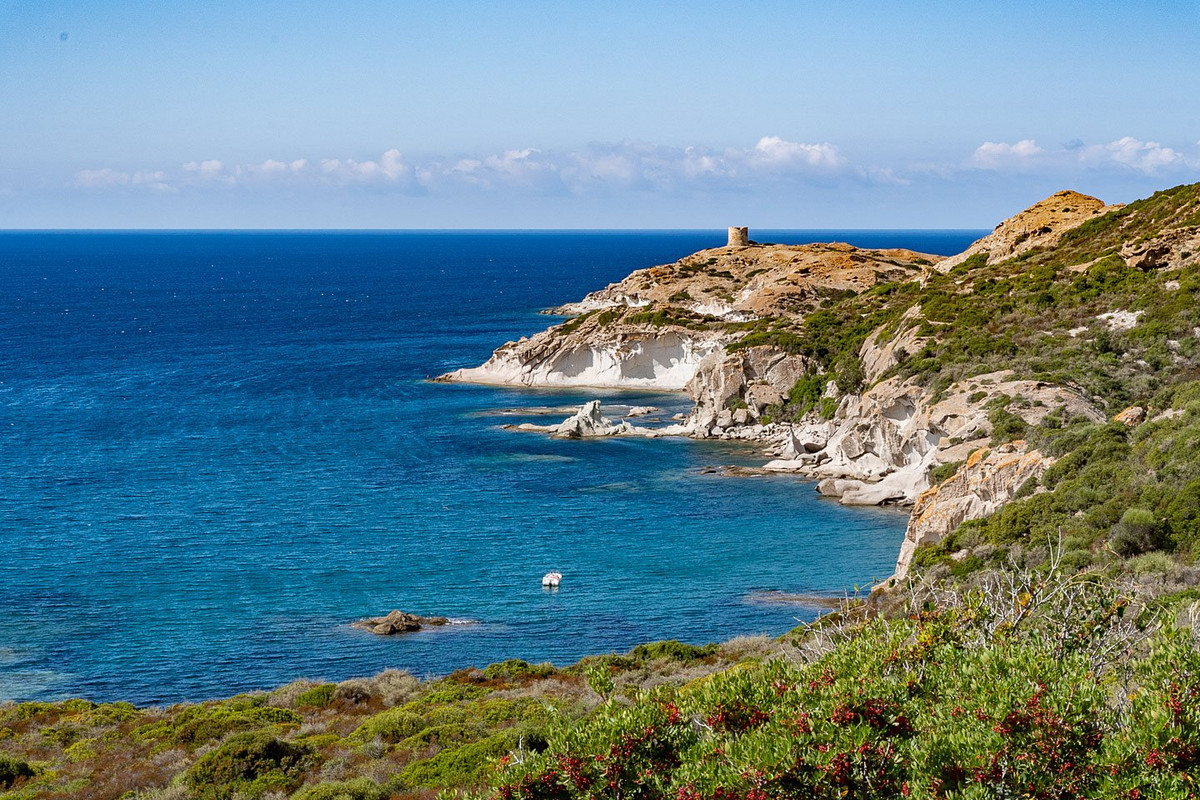
Which beach would you like? Pebble with quartz stones in the rough west, white icing sugar in the southeast or light brown sand peppered with rocks for snorkeling in the north. On Sardinia there's a suitable beach for every holidaymaker! And what's special about it is that behind every corner there's a new stretch of beach waiting to be discovered. And: in only two hours one drives on well developed roads once from east to west or vice versa.
In the west, the original Sardinia attracts: untouched beaches with quartz stones in all colours and the free massage of the soles of your feet in addition, if you walk on the endless beaches. Thousands of nuraghs are scattered in the rugged landscape - mysterious beehive-shaped stone ruins from the Bronze Age. One of the largest and oldest nuraghi is Su Nuraxi in Barumini, which dates from around 1500 BC.

Alghero, which is considered the little sister of Barcelona, is one of the most beautiful cities in Sardinia with its atmospheric Catalan old town. Walking through the bastions you get a free view of the sea and the sunset. Enjoy a delicious pizza by the metre here!
In the southeast of the island, for example in Villasimius, white icing sugar beaches, chirping cicadas in coloured oleander bushes and of course the crystal clear sea lure you to snorkel. From here it is not far to Cagliari. The capital of Sardinia is very urban with its spacious squares and historic buildings, such as the neoclassical town hall and the Bastione di Saint Remy.
Remains the north, where there is something for every taste. Glamour and glamour on the Costa Smeralda - exclusive paradise for the rich and beautiful. Timeless mountain villages in the hinterland with lonely areas of meadows and cork oak forests. Or, ideally suited for families, the former fishing village of San Teodoro, which has become a tourist stronghold. The "culprit" is the dream beach La Cinta, 3km long and shallow. Finest powdered sugar sand lines the crystal clear sea, from light turquoise to deep blue. Holidaymakers can expect here not only one of the most beautiful beaches of Sardinia, yes all of Europe, but also a large leisure offer and lively nightlife. And from everywhere on the northeast coast the view wanders to the rock massif of Tavolara. The island, which rises over 500m out of the water, belongs to the marine reserve. Rare plants and animals can be found here - Alpine sailers, mouflons and wild goats.

To properly prepare for your trip
How you get there:
with Edelweiss, Helvetic or Easyjet to Olbia or Cagliari
or by car and ferry from Genoa/Livorno to Olbia
How long should I go:
1 - 2 weeks
Best travel time:
April - October
Highlights:
Icing sugar beaches Simius and La Cinta, Alghero, wild hinterland
Tip for overnight stays:
Residence Fenizia in Villasimius
Pizza al Metro:
Ristorante Lido in Alghero
Realised by Michael Bachmann
Further travel pictures under www.kissed-by-nature.com
